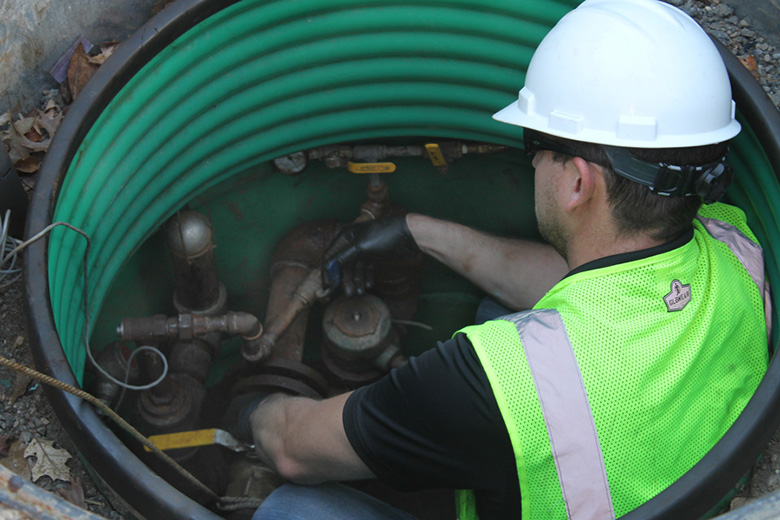
 Get help interpreting and meeting the EPA's latest UST regulations.
Get help interpreting and meeting the EPA's latest UST regulations.
The EPA implemented its latest underground storage tank (UST) rules effective on October 13, 2018, and Seneca Companies is here to assist you in interpreting and meeting those rules.
We are experts in compliance and environmental regulations. Our team members regularly perform leak detection testing, hydrostatic testing and overfill protection testing. We also handle the service and maintenance of your dispensers, automatic tank gauges (ATGs) and point of sale (POS) systems.
In the event you receive a Notice of Violation that your site is found to be out of calibration by Weights and Measures or if you experience other inspection issues, make Seneca your first call. Our factory-trained service technicians will get you back up and running and ensure you’re in compliance with the newest EPA regulations.
More Details on EPA’s Revised UST Regulation
In June 2015, the EPA released their long-awaited UST rule updates with an effective date of October 13, 2018 for all states without EPA program approval[JC2] . All states have now promulgated these rules and are in effect across the board.
The most impactful changes include:
1. Tanks and piping installed or replaced will be required to be secondarily contained and interstitial monitoring will be required. All new facilities should be installed with double wall tanks, piping and containments with continuous interstitial monitoring.
For existing stores, if more than 50 percent of a piping run must be replaced, double wall piping must be installed with containments. This could also affect dispenser replacements if product lines are repiped and would require installation of under dispenser containment (UDC.)
2. Ball floats can no longer be replaced or used in new installations as overfill protection. Overfill protection will be required to be inspected for proper operation every three years.
This new rule adds an additional testing requirement for every site requiring drop tubes (most common form of overfill protection) to be pulled out of every tank to check for functionality. This will result in many drop tube replacements due to corrosion and inability to remove from tank.
3. Regulators must be notified at least 30 days prior to switching to products containing greater than 10 percent ethanol or 20 percent biodiesel and demonstrate the compatibility of all equipment. This is just an administrative requirement but will require additional planning time.
4. Spill buckets and containment sumps will be required to be tightness tested every three years and replacement of “failing” spill buckets and containments will likely be required.
In most states this means that all sites with sumps installed after 2007 (or whenever double wall tanks and lines were required with secondary containment and interstitial monitoring) will be required to be hydrostatically or vacuum tested. Missouri is the only state where the EPA will allow existing containments to be grandfathered in.
Data from States with early implementation indicated 50 to 60 percent of containments (submersible turbine pumps and UDC) and at least 25 percent of spill buckets will need to be replaced.
5. Following repair/replacement of secondary containments and containment sumps, tightness testing must be completed within 30 days. Testing should be completed by your petroleum contractors.
6. Monthly and annual inspections will be required for all facilities to check for proper operation and maintenance of UST systems. Monthly inspections will include checking hanging hardware, automatic tank gauge (ATG) and spill buckets. Annual inspections will be more in-depth and require inspecting all containments, dispensers, etc. Annual inspection may be completed at same time as annual testing of probes, alarms and programming described below.
7. All components of the ATG including probes, sensors, leak detectors, alarms and programming will be required to be checked annually for proper operation. Sensors and leak detectors are already tested but this new rule adds additional testing requirements for every site.
This testing can be conducted by maintenance personnel or third-party vendors and will likely be completed at same time as annual inspection.
8. Liquid in the interstitial space of secondary contained systems (i.e. sensor alarms) has been added to the list of unusual operating conditions that should be reported as a suspected release. Liquid removal/investigation will become more important and will need to be completed in a timely manner.
EPA Resources on New UST Regulations
Find out whether your state has updated their UST regulations to incorporate the new revised federal requirements here. Find UST contact information for your state here.
Check out the EPA’s website for more information regarding the new rules and UST laws.
Don’t Wait for Your Next Inspection
Contact Seneca Companies today to ensure you’re in compliance with the EPA’s newest regulations and avoid a Notice of Violation or other inspection issues.